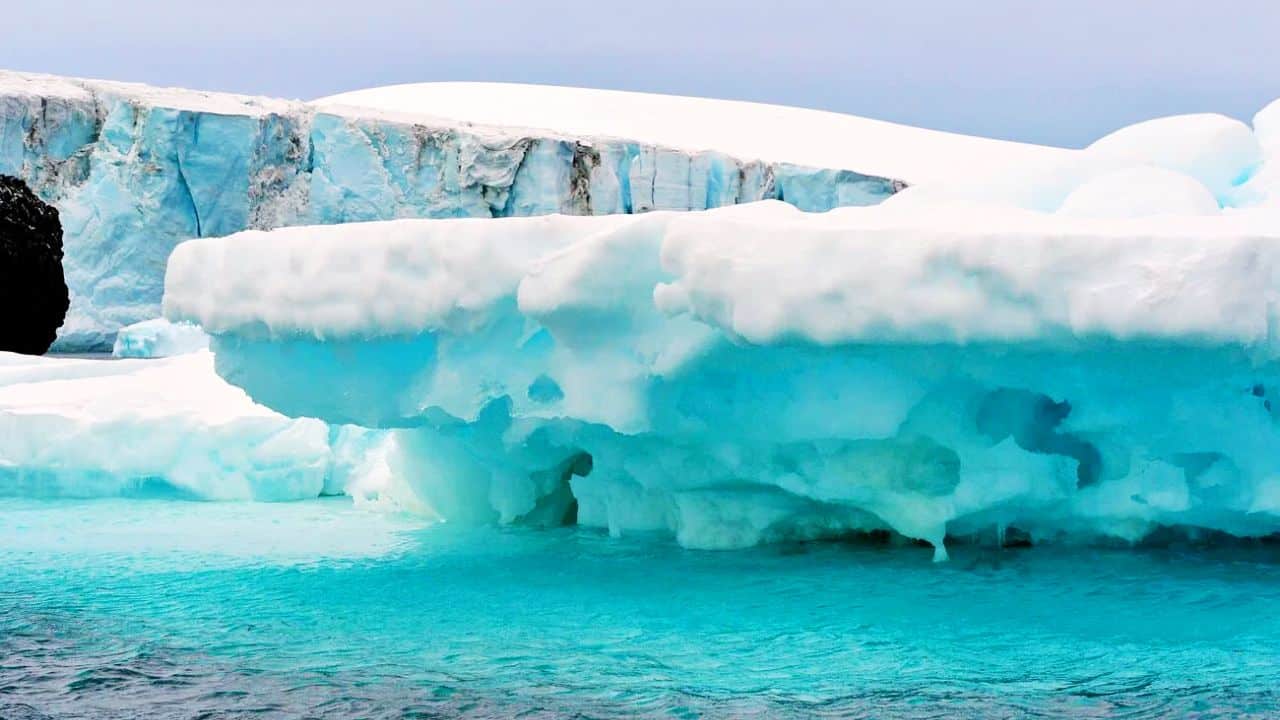Recent research has uncovered that ocean water is pushing miles beneath Antarctica’s Thwaites Glacier, often referred to as the “Doomsday Glacier.”
This finding suggests that the glacier is more susceptible to melting than previously thought, potentially leading to dire consequences for global sea levels.
Vigorous Melting Detected
The study, published in the Proceedings of the National Academy of Sciences, utilized radar data from space to perform an X-ray-like analysis of the glacier.
This advanced technology revealed that the relatively warm, salty ocean water is causing significant melting underneath Thwaites Glacier. As this seawater meets the ice, it leads to vigorous melting, which might mean current projections of global sea level rise are underestimated.
Understanding the Thwaites Glacier
Thwaites Glacier, located in West Antarctica, is the world’s widest glacier and approximately the size of Florida.
It is particularly vulnerable because the land on which it rests slopes downward, making it easier for ocean waters to infiltrate and erode the ice. The glacier already contributes 4% to global sea level rise and holds enough ice to raise sea levels by more than two feet.
More alarmingly, if Thwaites were to collapse completely, it could lead to an estimated 10 feet of sea level rise, posing a catastrophic threat to coastal communities worldwide.
Insights from the Research
A team of glaciologists from the University of California, Irvine, led the study.
Using high-resolution satellite radar data collected between March and June of last year, they mapped changes to Thwaites’ grounding line—the point where the glacier lifts off from the seabed and becomes a floating ice shelf. Grounding lines are critical to the stability of ice sheets and represent key vulnerability points.
Eric Rignot, a co-author of the study and professor of Earth system science at the University of California, Irvine, explained that the new data provided a detailed view of the glacier’s behavior. They observed seawater moving beneath the glacier in sync with tidal rhythms, causing the glacier’s surface to rise and fall by centimeters.
This dynamic motion, which can move the grounding line nearly four miles over a 12-hour tidal cycle, increases the glacier’s melting rate by replacing melted freshwater with warmer seawater.
Implications for Sea Level Rise
The findings indicate that the intrusion of seawater beneath Thwaites Glacier will likely lead to higher projections of sea level rise from Antarctica.
This process is not yet factored into current climate models, suggesting that future predictions may need to be adjusted to account for this new information. Ted Scambos, a glaciologist at the University of Colorado Boulder who was not involved in the study, described the research as “fascinating and important.”
He emphasized that this process could accelerate ice loss in future forecasts, even though the results apply to specific areas of the glacier.
Broader Impacts and Future Research
James Smith, a marine geologist at the British Antarctic Survey, noted that whether this seawater rush is a new phenomenon or has long been significant but unnoticed is still uncertain.
Either way, it is crucial to incorporate this process into ice sheet models to better understand its implications. Noel Gourmelen, a professor of Earth observation at the University of Edinburgh, praised the use of radar data for this study.
He highlighted how space-based technologies are enhancing our understanding of these remote environments. Gourmelen also pointed out that it is unclear how widespread this process is across Antarctica, although it is likely occurring in other regions as well.
Wider Vulnerability of Antarctica
In a related study published on the same day, researchers from the British Antarctic Survey analyzed record-low levels of sea ice around Antarctica last year. Using satellite data and climate models, they concluded that this record low would have been extremely unlikely without the influence of climate change.
While sea ice melting does not directly raise sea levels, it exposes coastal ice sheets and glaciers to more waves and warmer ocean waters, increasing their vulnerability to melting and disintegration.
A Lasting Regime Shift
The researchers predicted that even after two decades, not all the lost sea ice would return, indicating a lasting shift in the region’s climate regime.
Louise Sime, a co-author of the study, noted that prolonged low levels of Antarctic sea ice would profoundly impact local and global weather patterns. The new findings on Thwaites Glacier underscore the urgent need to reassess sea level rise projections and incorporate these processes into climate models.
Understanding and mitigating these impacts is crucial for protecting global coastal communities as Antarctica becomes increasingly vulnerable to the climate crisis.
The Information is Taken from CNN and USA Today










































